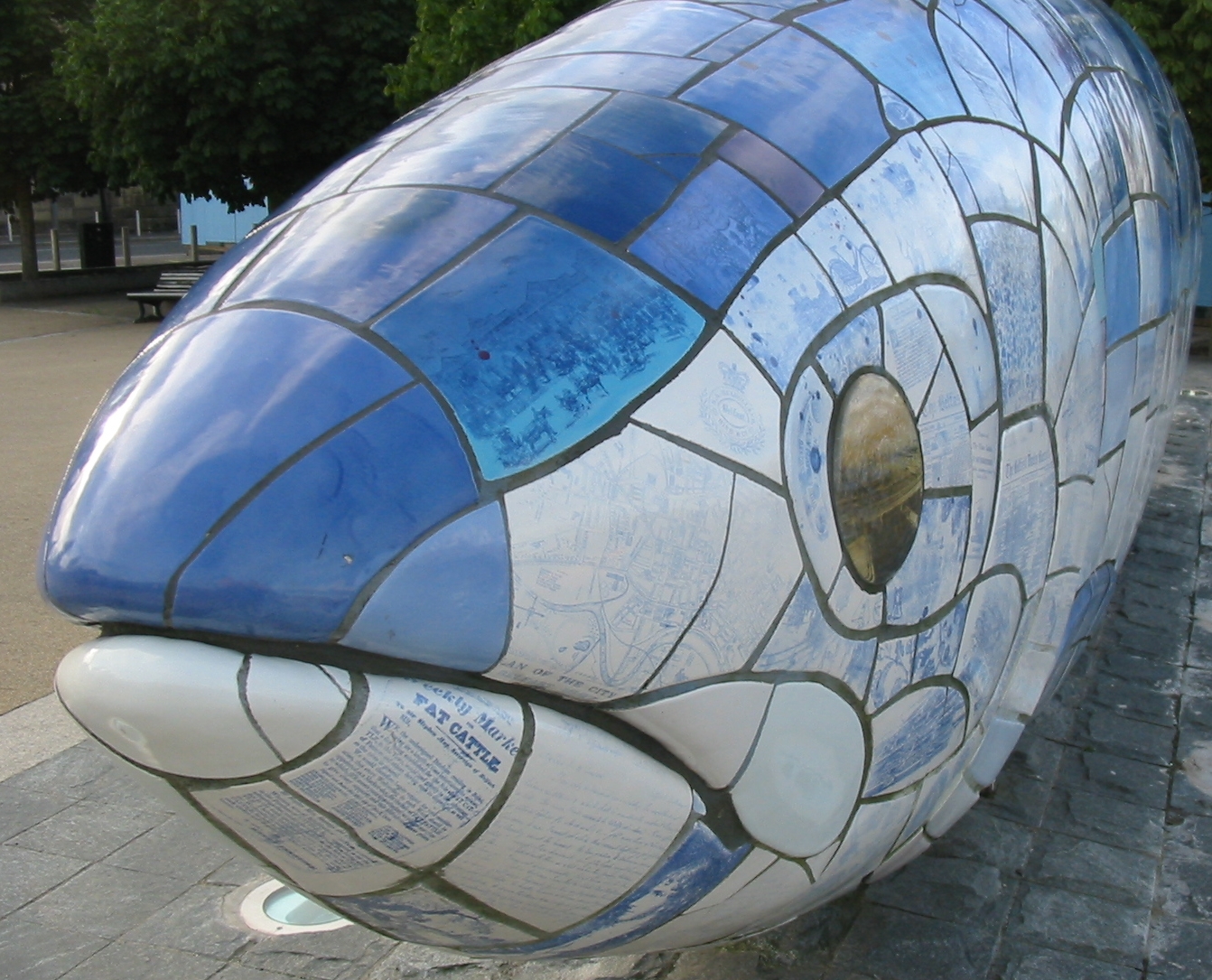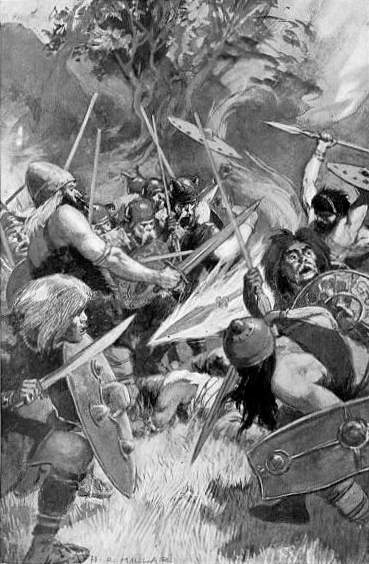|
Mes Gedra
In Irish mythology, Mesgegra (Mess-gegra, Mes Gegra, Mes Gedra) was king of Leinster during the events of the Ulster Cycle, and was also the brother of Mac Da Thó aka Mes Róidia in '' The Tale of Mac Da Thó's Pig''. Mesgegra was killed by the Ulster warrior Conall Cernach, who preserved Mesgegra's brain in lime as trophy. But the brain-ball was stolen by the Conacht warrior Cet mac Mágach who shot it at the Ulster king Conchobar Mac Nessa and lodged in his head, killing him seven years later, thus fulfilling the prophecy that Mesgegra would somehow avenge his own death. Name Mes-gegra is mentioned in '' Cormac's glossary'', only to state that ''Mes'' signifies 'edge' or 'blade'. Mes-gegra shared this Mes- prefix with his siblings and father. Margaret E. Dobbs guesses that Mesgegra would have originally meant "warrior (or sword) of Cecra". In Ancient Chaldea, "Mes-" meaning "hero or champions" appears in the roster of kings, and this Chaldean word derived from Sumeri ... [...More Info...] [...Related Items...] OR: [Wikipedia] [Google] [Baidu] |
Irish Mythology
Irish mythology is the body of myths native to the island of Ireland. It was originally passed down orally in the prehistoric era, being part of ancient Celtic religion. Many myths were later written down in the early medieval era by Christian scribes, who modified and Christianized them to some extent. This body of myths is the largest and best preserved of all the branches of Celtic mythology. The tales and themes continued to be developed over time, and the oral tradition continued in Irish folklore alongside the written tradition, but the main themes and characters remained largely consistent. The myths are conventionally grouped into ' cycles'. The Mythological Cycle consists of tales and poems about the god-like Túatha Dé Danann, who are based on Ireland's pagan deities, and other mythical races like the Fomorians. Important works in the cycle are the ''Lebor Gabála Érenn'' ("Book of Invasions"), a legendary history of Ireland, the ''Cath Maige Tuired'' ("Ba ... [...More Info...] [...Related Items...] OR: [Wikipedia] [Google] [Baidu] |
Conchobar Mac Nessa
Conchobar mac Nessa (son of Ness) is the king of Ulaid, Ulster in the Ulster Cycle of Irish mythology. He rules from Emain Macha (Navan Fort, near Armagh). He is usually said to be the son of the High King of Ireland, High King Fachtna Fáthach, although in some stories his father is the druid Cathbad, and he is usually known by his matronymic, ''mac Nessa'': his mother is Ness, daughter of Eochaid Sálbuide, King of Ulster. Legendary biography Birth There are several versions of how Conchobar was conceived. In the earliest, Ness, daughter of Eochaid Sálbuide, the then king of Ulster, asks the druid Cathbad what it is an auspicious time for. Cathbad replies, "for begetting a king on a queen". There are no other men around, so Ness takes Cathbad to bed and she conceives a son. In a later version, Ness is brought up by twelve foster-fathers, and while all twelve are at a feast, Cathbad, leading a ''fianna, fian'' or landless war-band, attacks the house and kills them all. Eochaid ... [...More Info...] [...Related Items...] OR: [Wikipedia] [Google] [Baidu] |
Dublin Institute For Advanced Studies
The Dublin Institute for Advanced Studies (DIAS) ( ga, Institiúid Ard-Léinn Bhaile Átha Cliath) is a statutory independent research institute in Ireland. It was established in 1940 on the initiative of the Taoiseach, Éamon de Valera, in Dublin. The institute consists of three schools: the School of Theoretical Physics, the School of Cosmic Physics and the School of Celtic Studies. The directors of these schools are, as of 2022, Professor Denjoe O'Connor, Professor Chris Bean and Professor Ruairí Ó hUiginn. The institute, under its governing act, is empowered to "train students in methods of advanced research" but does not itself award degrees; graduate students working under the supervision of Institute researchers can, with the agreement of the governing board of the appropriate school, be registered for a higher degree in any university worldwide. Following a comprehensive review of the higher education sector and its institutions, conducted by the Higher Education Auth ... [...More Info...] [...Related Items...] OR: [Wikipedia] [Google] [Baidu] |
Salmon Of Knowledge
The Salmon of Knowledge ( ga, An Bradán Feasa) is a creature in the Fenian Cycle of Irish mythology, sometimes identified with Fintan mac Bóchra, who was known as "The Wise" and was once transformed into a salmon. Fenian Cycle The Salmon story figures prominently in ''The Boyhood Deeds of Fionn'', which recounts the early adventures of Fionn mac Cumhaill. In the story, an ordinary salmon ate nine hazelnuts that fell into the Connla's Well, Well of Wisdom (''an Tobar Segais'') from nine hazel trees that surrounded the well. By this act, the salmon gained all the world's knowledge. The first person to eat of its flesh would in turn gain this knowledge. The poet Finn Eces (or Finegas) spent seven years fishing for this salmon. Finally Finn caught the salmon and gave the fish to Fionn, his servant and son of Cumhaill, with instructions to cook it but on no account eat any of it. Fionn cooked the salmon, turning it over and over, but when he touched the fish with his thumb to see ... [...More Info...] [...Related Items...] OR: [Wikipedia] [Google] [Baidu] |
Óðinn
Odin (; from non, Óðinn, ) is a widely revered god in Germanic paganism. Norse mythology, the source of most surviving information about him, associates him with wisdom, healing, death, royalty, the gallows, knowledge, war, battle, victory, sorcery, poetry, frenzy, and the runic alphabet, and depicts him as the husband of the goddess Frigg. In wider Germanic mythology and paganism, the god was also known in Old English as ', in Old Saxon as , in Old Dutch as ''Wuodan'', in Old Frisian as ''Wêda'', and in Old High German as , all ultimately stemming from the Proto-Germanic theonym *''Wōðanaz'', meaning 'lord of frenzy', or 'leader of the possessed'. Odin appears as a prominent god throughout the recorded history of Northern Europe, from the Roman occupation of regions of Germania (from BCE) through movement of peoples during the Migration Period (4th to 6th centuries CE) and the Viking Age (8th to 11th centuries CE). In the modern period, the rural folklore of Germanic Eu ... [...More Info...] [...Related Items...] OR: [Wikipedia] [Google] [Baidu] |
Fenris Wolf
Fenrir (Old Norse: ; "fen A fen is a type of peat-accumulating wetland fed by mineral-rich ground or surface water. It is one of the main types of wetlands along with marshes, swamps, and bogs. Bogs and fens, both peat-forming ecosystems, are also known as mires. T ...-dweller")Orchard (1997:42). or Fenrisúlfr (O.N.: ; "Fenrir's wolf", often translated "Fenris-wolf"),Simek (2007:81). also referred to as Hróðvitnir (O.N.: ; "fame-wolf")Simek (2007:160). and Vánagandr (O.N.: ; "monster of the [River] Ván"),Simek (2007:350). or Vanargand, is a wolf in Norse mythology. Fenrir, together with Hel (being), Hel and the Jörmungandr, World Serpent, is a child of Loki and giantess Angrboða. He is attested in the ''Poetic Edda'', compiled in the 13th century from earlier traditional sources, and the ''Prose Edda'' and ''Heimskringla'', written in the 13th century by Snorri Sturluson. In both the ''Poetic Edda'' and ''Prose Edda'', Fenrir is the father of the wolves Sköll ... [...More Info...] [...Related Items...] OR: [Wikipedia] [Google] [Baidu] |
Týr
(; Old Norse: , ) is a god in Germanic mythology, a valorous and powerful member of the and patron of warriors and mythological heroes. In Norse mythology, which provides most of the surviving narratives about gods among the Germanic peoples, sacrifices his hand to the monstrous wolf , who bites it off when he realizes the gods have bound him. is foretold of being consumed by the similarly monstrous dog during the events of Ragnarök. The generally renders the god as ''Mars'', the ancient Roman war god, and it is through that lens that most Latin references to the god occur. For example, the god may be referenced as (Latin 'Mars of the Assembly thing_(assembly).html" "title="nowiki/>thing (assembly)">Thing]') on 3rd century Latin inscription, reflecting a strong association with the Germanic thing (assembly), thing, a legislative body among the ancient Germanic peoples. By way of the opposite process of , Tuesday is named after (''s day'), rather than Mars, in English ... [...More Info...] [...Related Items...] OR: [Wikipedia] [Google] [Baidu] |
Lugh
Lugh or Lug (; ga, label=Modern Irish, Lú ) is a figure in Irish mythology. A member of the Tuatha Dé Danann, a group of supernatural beings, Lugh is portrayed as a warrior, a king, a master craftsman and a savior.Olmsted, Garrett. ''The Gods of the Celts and the Indo-Europeans''. University of Innsbruck, 1994. p.117 He is associated with skill and mastery in multiple disciplines, including the arts.Monaghan, Patricia. ''The Encyclopedia of Celtic Mythology and Folklore''. Infobase Publishing, 2004. pp.296-297 Lugh also has associations with oaths, truth and the law, and therefore with rightful kingship.Koch, John T. ''Celtic Culture: A Historical Encyclopedia''. ABC-CLIO, 2006. p.1200 Lugh is linked with the harvest festival of Lughnasadh, which bears his name. His most common epithets are ''Lámfada'' ("long hand" or "long arm", possibly for his skill with a spear or his ability as a ruler) and ''Samildánach'' ("equally skilled in many arts"). In mythology, Lugh is the ... [...More Info...] [...Related Items...] OR: [Wikipedia] [Google] [Baidu] |
Name And Genealogy
A name is a term used for identification by an external observer. They can identify a class or category of things, or a single thing, either uniquely, or within a given context. The entity identified by a name is called its referent. A personal name identifies, not necessarily uniquely, a ''specific'' individual human. The name of a specific entity is sometimes called a proper name (although that term has a philosophical meaning as well) and is, when consisting of only one word, a proper noun. Other nouns are sometimes called "common names" or (obsolete) "general names". A name can be given to a person, place, or thing; for example, parents can give their child a name or a scientist can give an element a name. Etymology The word ''name'' comes from Old English ''nama''; cognate with Old High German (OHG) ''namo'', Sanskrit (''nāman''), Latin '' nomen'', Greek (''onoma''), and Persian (''nâm''), from the Proto-Indo-European (PIE) ''*h₁nómn̥''. Outside Indo-European, it ... [...More Info...] [...Related Items...] OR: [Wikipedia] [Google] [Baidu] |
Curadmír
The ''Curadmír'', modern Curadhmhír (Champion's Portion) was an ancient custom referred to in early Irish literature, whereby the warrior acknowledged as the bravest present at a feast was given precedence and awarded the choicest cut of meat. This was often disputed violently. The custom appears most often in the legends of the Ulster Cycle. It is parallelled by historical customs of the ancient Celts of continental Europe, as recorded by classical writers. The Story of Mac Dá Tho's Pig The Ulster Cycle saga '' Scéla Mucce Meic Dá Thó'' ("The Story of Mac Dá Tho's Pig") features a dispute over the Champion's Portion between warriors of Ulster and Connacht who are guests at a feast in Leinster. They dispute it by boasting of their previous heroic deeds, and eventually the Connacht hero Cet mac Mágach is acknowledged as the bravest man present. Just as he is about to carve the pig, the Ulster hero Conall Cernach arrives, and his boasts force Cet to give way to him. But he cla ... [...More Info...] [...Related Items...] OR: [Wikipedia] [Google] [Baidu] |
.jpg)





